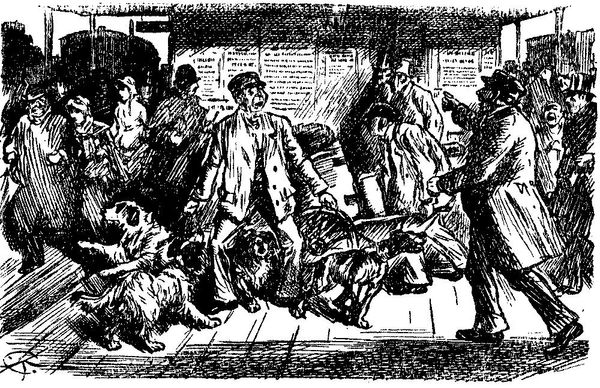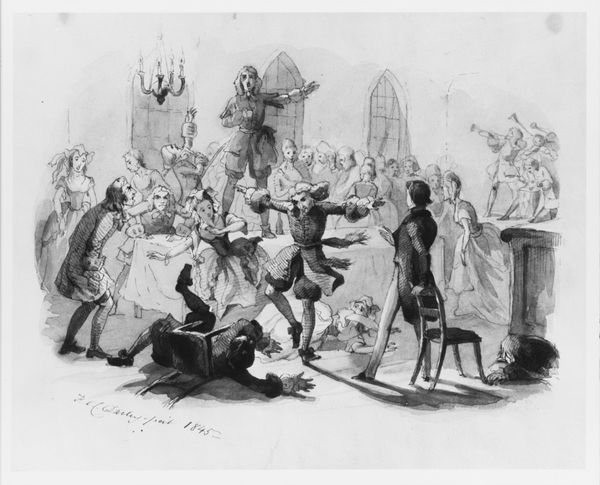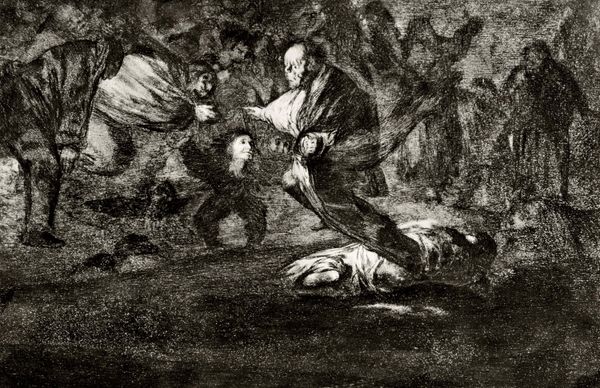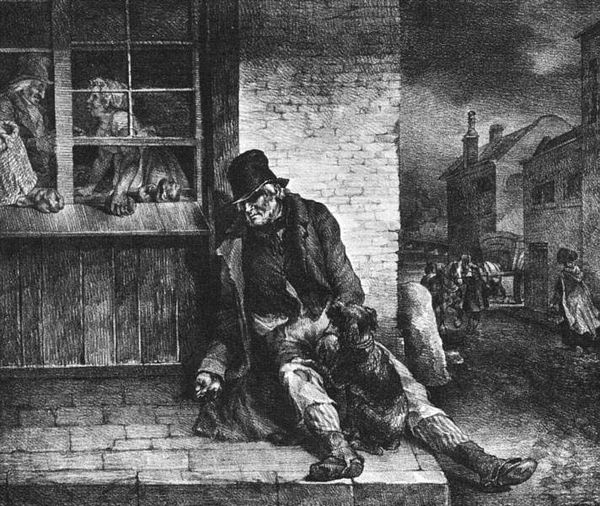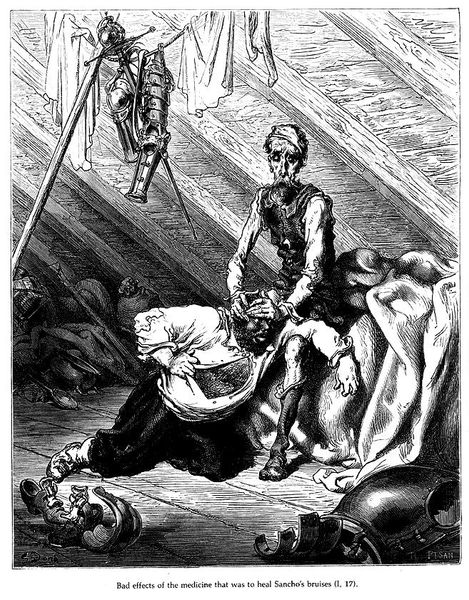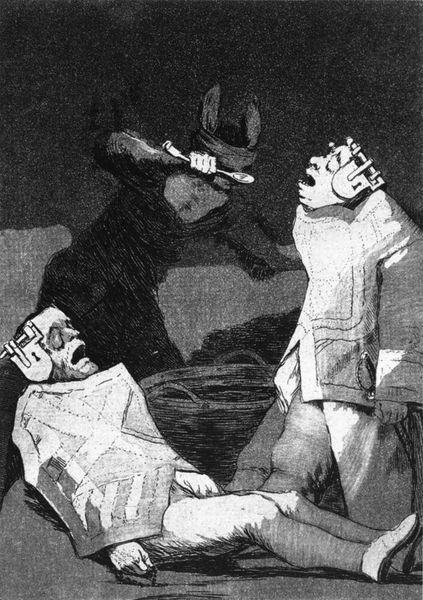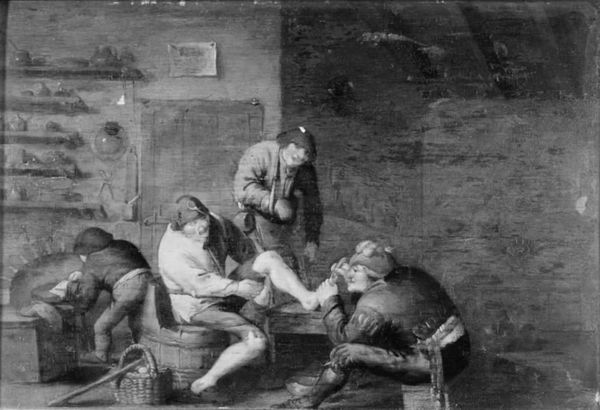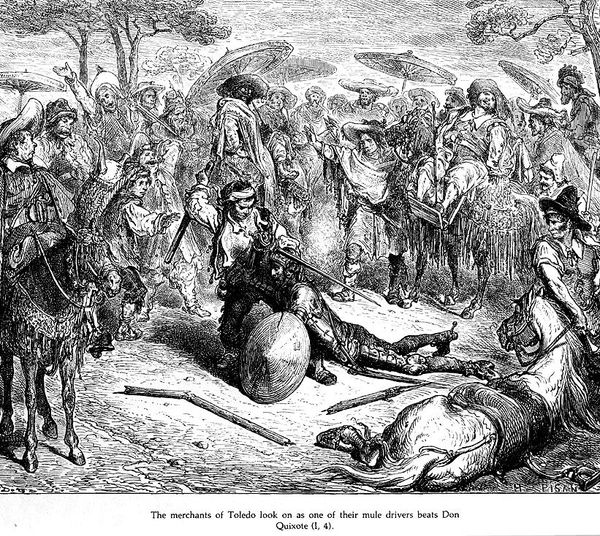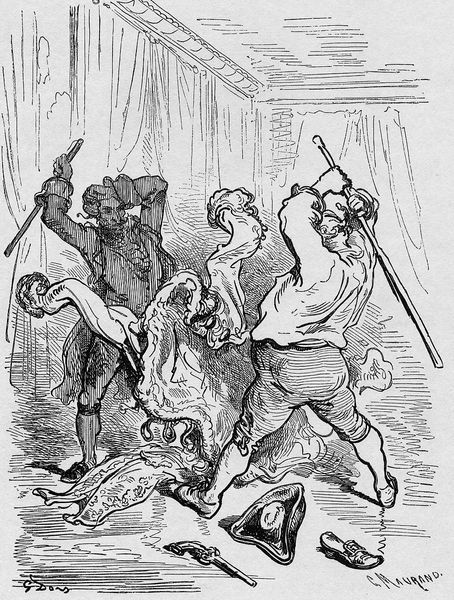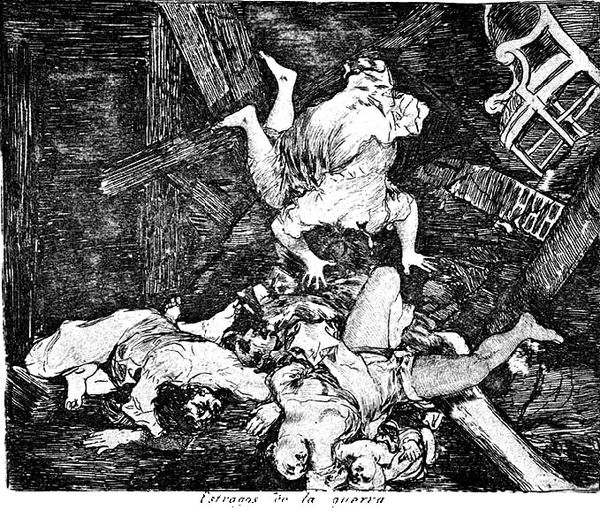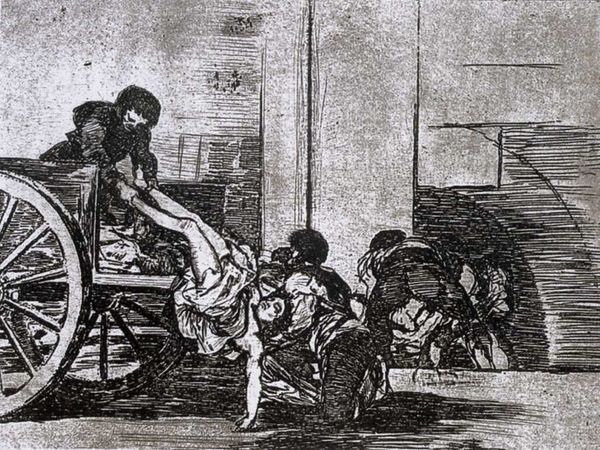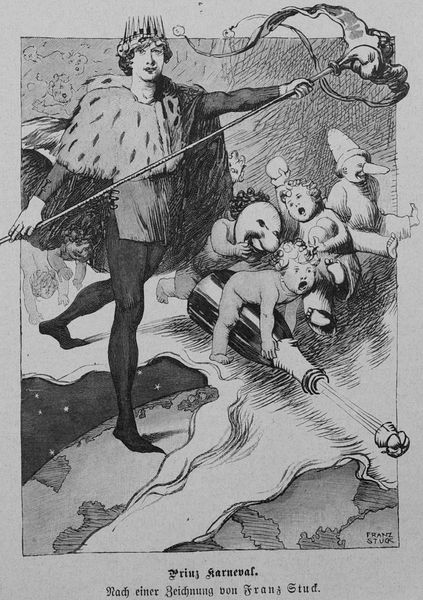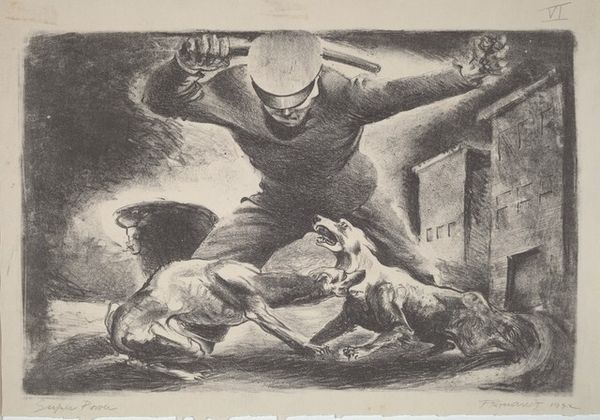
painting
#
black and white photography
#
painting
#
landscape
#
black and white format
#
black and white theme
#
black and white
#
genre-painting
#
history-painting
#
monochrome
#
realism
#
monochrome
Copyright: Public domain
Curator: Frederic Remington created "A Misdeal" in 1897. Its monochrome palette and rather dramatic subject matter really caught my attention. What are your first impressions? Editor: My initial thought is how effectively Remington has used the absence of color to amplify the stark realism and the inherent violence of the scene. The play of light and shadow really directs the eye, almost brutally so. Curator: Absolutely. Notice how Remington employs diagonal lines through the placement of bodies to fracture the composition, disrupting any sense of equilibrium. It echoes the chaos of a card game turned deadly. The table itself seems almost like an island in this sea of… well, bodies. The cards scattered atop the table. Editor: Indeed. And that upturned chair—a visual signifier of disruption and sudden violence. Symbolically, the chair, usually an object of rest and stability, is rendered useless, echoing the fate of the card players themselves. I'm also curious about what Remington intended to evoke through the figures in the background, lingering just outside of the doorway. Are they reinforcements? Or perhaps merely curious onlookers, attracted by the gunshots. They bear witness, but do not intervene. Curator: The tension is definitely heightened by their ambiguous presence. The work offers more than a snapshot of violence; it provides commentary on frontier justice and perhaps, the unpredictable nature of life and death. One man seems startled by being shot and is reaching toward the chest. It evokes a sense of desperation to be expected for one on their way to die. Editor: Furthermore, Remington’s choice to render this scene in monochrome heightens its timeless quality, elevating the event from a mere genre painting to something more allegorical, hinting at the cyclical nature of violence and chance. The viewer is left to interpret the cultural implications of frontier justice. Curator: Precisely. It serves as both historical document and timeless reflection. Editor: The way he distills it to basic blacks and whites is so stark, it forces the viewer to fill in the gaps—to become complicit in the story. Fascinating work. Curator: Agreed, quite a potent study in narrative and form. Thank you for sharing your thoughts.
Comments
No comments
Be the first to comment and join the conversation on the ultimate creative platform.
